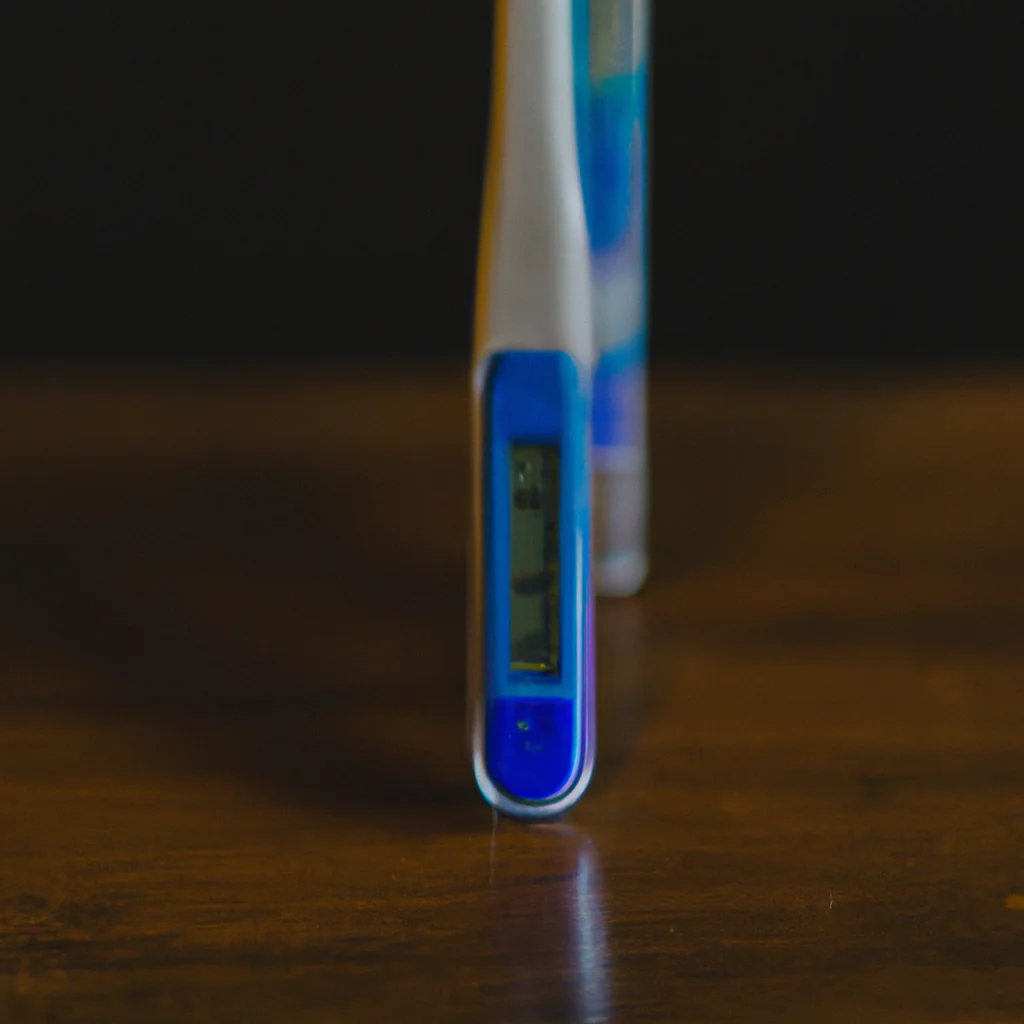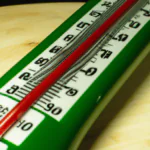Keeping your kitchen thermometer clean is essential for making accurate readings. But how do you do it? And just as importantly, is it really necessary? Here, we’ll explain how to clean a thermometer to keep it sanitary and safe for use in your kitchen.
Table of Contents
How to clean a thermometer
Using a cleansed thermometer is the most effective way to measure changes in temperature. It’s important to clean a thermometer before and after every use to ensure accuracy and prevent the spread of germs. Here is a step-by-step guide on how to clean your thermometer.
Step 1: Preparing to Clean
Gather materials you will need to clean your thermometer. This includes: rubbing alcohol or lukewarm soapy water, a cloth, and cool water.
Step 2: Cleaning with Alcohol / Soap
Use either rubbing alcohol or lukewarm soapy water to clean the surface of the probe area. Swab the surface with a cloth that has been dipped in either solution. Make sure you cover every area of the thermometer thoroughly.
Step 3: Rinse Temperature Probe
Rinse off the probe area with cool water. To ensure that all of the soap/alcohol residue is removed, proceed with a few test rinses.
Step 4: Dry Thermometer
You can choose between these two methods to dry the thermometer:
- Air-dry: Simply leave the thermometer out in open air. The thermometer is completely dry once there are no visible traces of wetness.
- Wipe-dry: Use a clean cloth and gently wipe over the probe area until there is no visible moisture left.
Step 5: Finished!
Congratulations! Your thermometer is now ready for its next use. Be sure to clean your thermometer regularly to make sure it’s always providing accurate readings.
Sanitizing a Kitchen Thermometer: The Right Way
Using a thermometer to check the temperature of food is an important step for preventing foodborne illnesses. It’s important to make sure your thermometer is both accurate and sanitary in order to ensure the safety of your meals.
A simple and effective way to sanitize your kitchen thermometer after each use is to wash it with hot soapy water. Lather the stem or needle of the thermometer with dish soap or antibacterial soap, rinse thoroughly with hot water, and air dry it on a clean paper towel.
For added sanitation, you can also disinfect the thermometer. To do this:
- Bring a pot of water to a boil.
- Once boiling, turn off the heat and allow it to cool slightly.
- Submerge the probe of the thermometer in the water and let it sit for one minute.
- Then take out the thermometer and dry it off thoroughly with a clean paper towel.
Be sure to always store your kitchen thermometer in a clean environment when not in use.
Kitchen environments can be full of potential contaminants, and how you store your tool makes all the difference. Keep your thermometer away from high-traffic areas in the kitchen, such as countertops or cutting boards where other ingredients might come in contact with it. Store it somewhere that’s easy for you to access, such as in a drawer or on a hook near your stove.
Can Hand Sanitizer Clean a Thermometer?
Getting a accurate temperature reading is an important part of maintaining good health, especially during the COVID-19 pandemic. But did you know there are specific steps to cleaning and sanitizing a thermometer?
According to Sherman, an infectious disease specialist, hand sanitizers or disinfecting wipes can be used to clean a thermometer in a pinch. However, not all hand sanitizers contain at least 70-percent alcohol, which is the official recommendation for disinfecting thermometers.
If you’re trying to clean a thermometer with a hand sanitizer, it’s important that you check the label for the percentage of alcohol content before using it. Generally speaking, you should use an alcohol-based hand sanitizer or disinfectant to clean your thermometer.

Steps for Cleaning Your Thermometer:
- First: Clean off any dirt or debris with a soft cloth or cotton ball soaked in warm water.
- Second: Sanitize the thermometer with either isopropyl alcohol that’s 70 percent or higher OR a household bleach solution made of one teaspoon of bleach per one quart of water.
- Third: Thoroughly rinse off the thermometer in warm water and then dry it off with a soft cloth.
- Finally: Store the thermometer in a protective case until it is ready to be used again.
It’s important to remember that improper cleaning and sanitation techniques have the potential to cause cross contamination and interfere with temperature readings. Keeping your family safe and healthy means taking extra precautions– like making sure you know how to properly clean your thermometer– can make all the difference during this unprecedented time. How Long Should Disinfection Take?
When it comes to temperature readings, digital thermometers have become the go-to device. As they store temperatures safely and accurately, they need to be properly maintained in order to make sure that readings are accurate and up-to-date.
In order to keep your digital thermometer hygienic, it’s important to clean it properly. To do this, you’ll need some warm water and mild soap, and you’ll need to take a few steps:
- Wash the tip and any part that was in someone’s mouth with soap and water for 20 seconds. This will ensure any bacteria that may have been transferred is destroyed.
- Try not to get the half of the thermometer from the screen onward too wet. Doing so could risk frying the battery of the thermometer which could render it unusable.
Using mild soap and warm water helps to remove any bacteria or germs from the thermometer without damaging the device. It’s important to thoroughly wash the parts that came into contact with the patient’s mouth. If you don’t do this, your temperature readings could be inaccurate.
Once you’ve finished washing your digital thermometer, make sure that it is completely dry before using it again. Leaving excess moisture on can cause damage to the electrical components of your digital thermometer over time.
By following these simple steps, you can ensure that your digital thermometer remains accurate and hygienic for years to come!
Cleaning a Thermometer with Hydrogen Peroxide: Does it Work?
Hydrogen peroxide is widely used as an antiseptic disinfectant to clean wounds and it can also be used to sanitize other items like a thermometer. If you are uncertain about the cleanliness of your thermometer, hydrogen peroxide is a great solution.
Soak your thermometer in equal parts water and hydrogen peroxide for a few minutes to eliminate germs. It’s important not to leave the thermometer soaking for too long, or it could weaken or damage the material. The exact time varies depending on what type of material your thermometer is made out of, but generally speaking 5-10 minutes should be enough time to effectively kill most germs.
After soaking, rinse the thermometer well with water and air dry. You may also need to use a soft cloth or nonabrasive scrub brush if there are stubborn areas that will not rinse off. Be sure to dispose of the hydrogen peroxide mixture afterwards.
It is advisable to deep clean your thermometer at least once a week, depending on how often you use it. This could mean sterilizing it with hydrogen peroxide every week or two. Doing this will help prevent bacteria from transferring between family members and reduces the risk of illness.
Here is a quick recap of the steps required to deep clean your thermometer using hydrogen peroxide:
- Soak: Soak your thermometer in equal parts water and hydrogen peroxide for 5-10 minutes.
- Rinse & Air Dry: Rinse the thermometer well with water and then air dry.
- Clean Regularly: Deep clean your thermometer at least once a week.
Using hydrogen peroxide to sanitize your thermometer is an effective way to keep it clean and germ-free. Just make sure to follow the steps outlined above and you can reduce the risk of illness for yourself and those around you.




